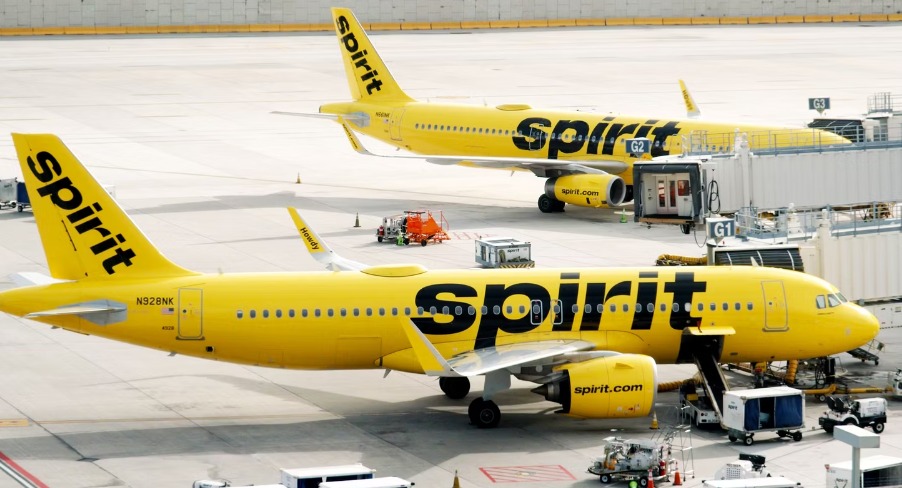Spirit Airlines’ full year 2024 operating revenues were down 8.4% to $4.8bn. The company said in an SEC filing this was largely driven by a 5.1% decrease in average yield to 11.25 cents, as well as a 3.5% decrease in passengers. Passenger revenues were down 8.7% to $4.8bn. Other revenues were up 7.7% to $101.7bn.
The filing comes a nearly two weeks after its restructuring plan was approved by a US bankruptcy court. The airline had filed for bankruptcy on November 18, 2024, and was approved to continue operations as normal the following day.
Full year TRASM was down 3.7%, compared to 2023, to 9.27 cents. Average load factor for the year was up 1.1 percentage point to 82.4%. The company’s full year capacity was down 4.8% in the year.
Unit costs were up 7.9% to 11.35 cents for the full year. Operating expenses were up 2.7%, or $160.5 million, compared to 2023’s $5.9bn total operating expenses.
Spirit said aircraft rent expense increased 42.1%, or $160.7 million, was due to the higher number of aircraft financed under operating leases throughout the year. The company recorded 23 new operating leases in 2024. The increase also related to an increase in supplemental rent in 2024, driven by the accrual of lease return costs related to the return of two aircraft.
In addition, higher salaries and health benefits expenses drove increased costs.
The company said these increases were offset by a 13% decrease in fuel price per gallon, as well as a 6.8% decrease in fuel gallons consumed. This led to a 18.8% decrease in aircraft fuel expense, totalling $1.5bn.
Maintenance and repairs expenses were down 2.5% in the year, compared to 2023, due to aircraft on ground (AOG) credits as a result of the Pratt & Whitney geared turbofan (GTF) engine issues. The company received $150.6 million in credits from Pratt & Whitney related to the issue.
“Beyond 2024, we also expect to receive compensation from Pratt & Whitney for the loss of utilisation of the GTF engines,” said Spirit in the filing.
The company’s reported other expenses more than doubled from $62.8 million in 2023, up to $184.3 million in 2024.
As part of its strategy to return to profitability, the company identified around $80 million of annualised cost reductions in the fourth quarter, which it has began implementing in early 2025. This largely involved a reduced workforce, following its sale of 23 A320ceo family aircraft in 2024 as well as AOG. The company had furloughed 170 pilots from September 2024, as well as 300 additional pilots from the end of January 2025.
The company said the retirement of the 23 A320ceo family aircraft resulted in a $282.5 million impairment charge, as well as a $11.9 million loss related to the sale of 17 A319 airframes and 38 A319 engines.
The company said these losses on disposal of assets were offset by a net gain of $25.1 million from an eight aircraft sale and leaseback transaction, delivered in 2024.
Spirit took delivery of 19 aircraft under operating lease. In addition, it purchased three spare engines with cash and purchased one off lease. The company paid $276 million in debt payments on its outstanding aircraft debt obligations.
Net of refunds, the company paid $6.5 million in pre-delivery payments (PDP) in the full year and $14.5 million of capitalised interest for future aircraft deliveries and spare engines. Spirit received $362.8 million in PDPs related to sale and leaseback transactions completed during the year that were originally part of its orderbook.
As of the end of the year, the company’s future payments on contractual obligations – largely related to aircraft and engine purchases – totalled $14bn. Around $1.3bn is due for 2025, $2.1bn for 2026-27, $2.9bn for 2028-29, and $7.8bn for 2030 and beyond.
As of the end of the year, the company had $1bn in liquid assets. Net cash used in operating activities totalled $758.1 million in 2024, up from $246.7 million a year prior.

